Art & Exhibitions
Immersive Art Experiences Used to Be the Wave of the Future. But Can They Outlast the Coronavirus Pandemic?
Experts say participatory art may be changed forever.
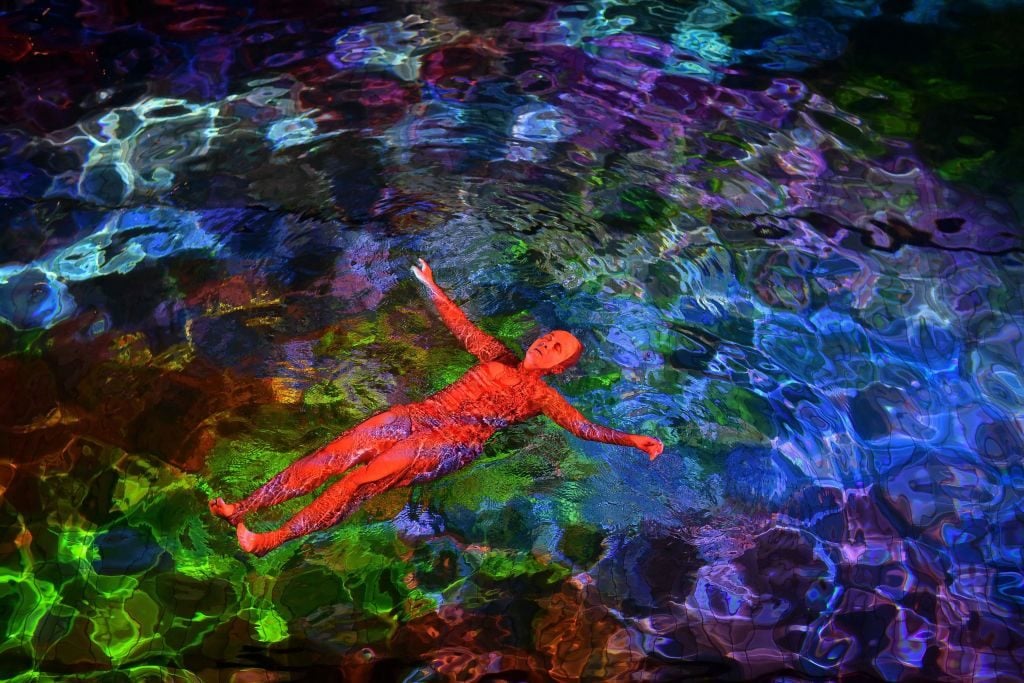
Experts say participatory art may be changed forever.

Two summers ago, when I went to see AA Bronson’s exhibition at the KW Institute for Contemporary Art in Berlin, I crawled behind the curtained opening of a little tent where I met the artist and his collaborator sitting in robes or nude on plush pillows. We shook hands and shared tea for 15 minutes in the Tent of Healing before I handed over a totem I had brought with me and stepped back into the gallery. I didn’t flinch at the intimacy of the experience.
Throughout the last decade, museums and galleries have been leaning into such experiential programming, and viewers have become conditioned to expect them. Touching artworks, putting on headsets, lounging on furniture—anything beyond simply standing and looking has become a staple of museum programming.
“Visitors have become used to this kind of experience at museums,” says Tine Colstrup, a curator at the Louisiana Museum of Art in Denmark, and the organizer of a large-scale show dedicated to immersive art-film pioneer Pipilotti Rist. And artists like Rist have been called on more and more to “soften the white cube,” she says. “Now, we have a challenge to that and it’s not a challenge coming from inside the museum.”
Indeed, the coronavirus pandemic has upended the status quo, and museum officials are wondering when—and if—the immersive experiential experience will return.
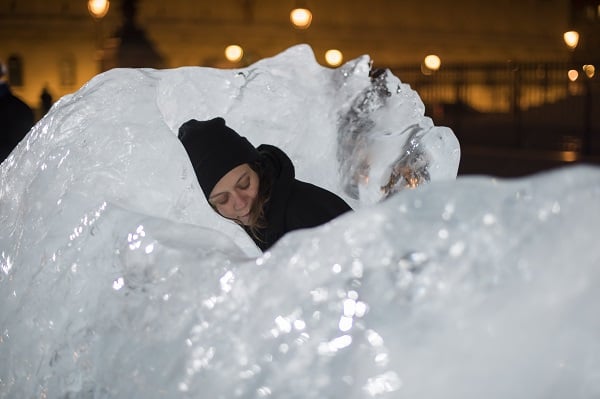
Ice Watch by Olafur Eliasson and Minik Rosing, Place du Panthéon, Paris, 2015. Photo: Martin Argyroglo © 2015 Olafur Eliasson.
Of course, the biggest tremors have been felt by the organizers of shows that were meant to take place this summer and fall.
And one of the first exhibitions to test out the new viewing landscape is the second Riga biennial, which opens on August 20 in Latvia.
“I really wanted to collaborate with the limits of our present and what kind of space was left to reimagine things. And, believe me, there is a huge space for reimagining,” says the show’s curator, Rebecca Lamarche-Vadel.
“Suddenly, we all realized there are different ways of working,” she says.
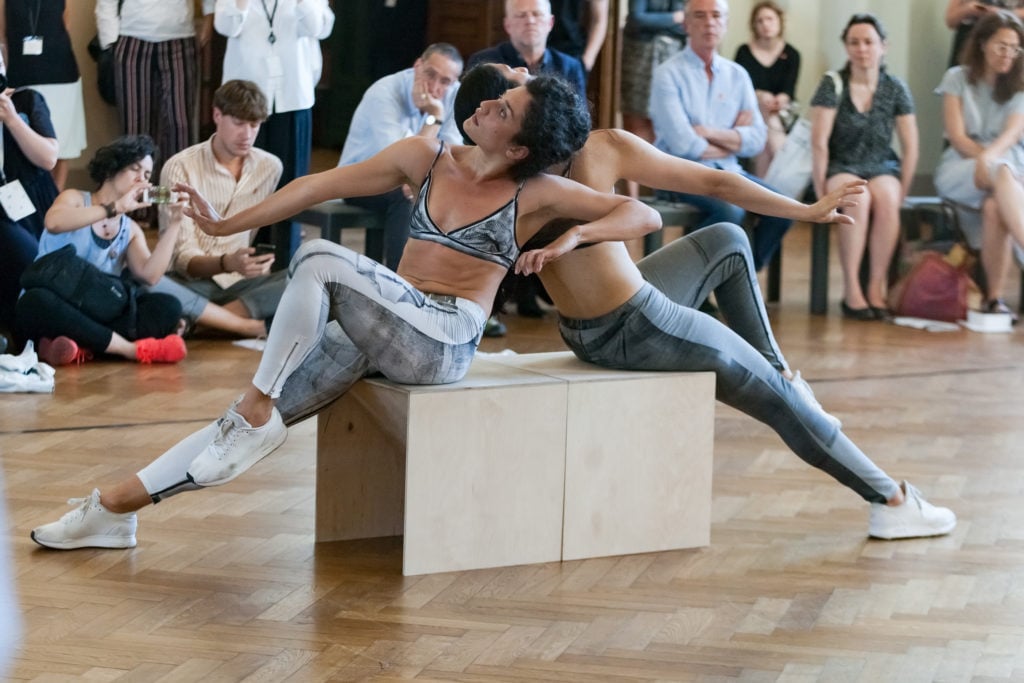
Alexis Blake performace Allegory of the Painted Woman. Photo by Juris Rozenbergs. RIBOCA1: ‘Everything Was Forever, Until It Was No More’ in Riga, Latvia, 2 June – 28 October 2018, rigabiennial.com
For artists unable to travel to Latvia, or for artworks that cannot be shipped, contingency plans have been made: Ugo Rondinone, for example, is making a replica of a work that cannot get to Riga.
But not every project will go on as planned. The Polish sculptor Pawel Althamer’s Draftsmen’s Congress by One, a huge collective group drawing in which participants share tools and ladders and scrawl and doodle all over a designated space, is no longer possible.
Now, the 43,000-square-foot venue that was to host his work will stand empty as a testament to the times. “It was extremely important to keep the ghosts of what it was supposed to be. I think the ghosts are as loud as the work itself,” Lamarche-Vadel says.
Anticipating that not as many people will be able to travel to the show, the organizers will also document the biennial as a film, suggesting new types of immersion.
“Anyone who is at the biennial may become an actor,” Lamarche-Vadel says, adding that artists of the future will need to find new modes of participation.

Pawel Althamer’s Draftsmen’s Congress from the 7th Berlin Biennal in 2012. Courtesy of the artist, Foksals Gallery Foundation, Warsaw and neugerriemschneider, Berlin. Photo credit: Yevgen Samborsky.
But in most cases, regulations will mean changing the visitor experience more than the presentation of actual artworks themselves.
“Because of the global crisis, we are not focusing on one opening date only, but more a flow of activities and actions, and slowly activating certain spaces, since a traditional opening with 2,000 to 3,000 people is not possible anymore,” says Hedwig Fijen, the director of Manifesta, which opens on August 28 in around the French coastal town of Marseille.
Like most curators, Cecilia Alemani, director of 2022 Venice Biennale, does not pretend to know what the future holds. But it seems likely that even tools such as headphones and VR goggles will not be used as casually as before.
“It is something that occupies every curator’s mind,” Alemani tells Artnet News. “Will I be able to show a large-scale, durational performance? I am a big fan of such artworks and the artists behind them,” she says, noting that these artists are among “the most affected by this pandemic.”
“As artists always do, they will come up with a solution, though there will be adjustments,” she says.
But some experience may be lost altogether, which may not necessarily be a bad outcome. “I have this terrifying image of the Museum of Ice Cream and having to jump into a pool of sprinkles, but that would probably be okay to put an end to,” Alemani says with a laugh.
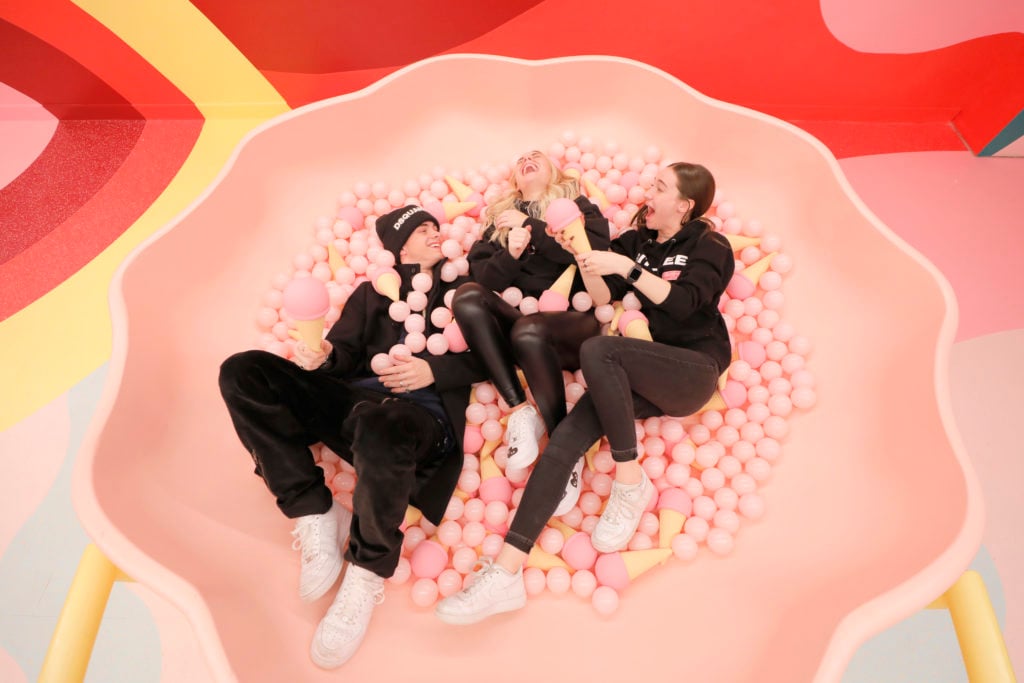
Museum of Ice Cream, New York. Image courtesy of MOIC.
But Meow Wolf, the art-experience company that was expanding in leaps and bounds across the US last year, is optimistic, though it says its employees have been working “overtime” to adapt company strategy.
“Our experience has always centered around exploration and play, and providing a full sensory experience of sight, touch, and sound for our visitors,” a Meow Wolf spokesperson told Artnet News. “COVID-19 has led us to re-examine the ways that our visitors interact with the artwork, with ‘touch’ no longer a focus.”
To that end, Meow Wolf has created an app that allows viewers to access their installations’ storylines through their phones, instead of touching items in real space to find clues. The change may even help solve long-lingering issues.
“Before COVID-19, our Santa Fe exhibit could get crowded when it was at full capacity,” the spokesperson said. But now, with lower capacity and set time slots, viewers will have the chance to pass through the exhibition more efficiently, and also, should they choose, in a non-linear way.
Film artist Pauline Curnier Jardin, winner of last year’s prestigious German Nationalgalerie prize, suggests that all these changes may make museum visitors better art-viewers.
“People will be more dedicated and more available to watch and digest a storyline in its complexity, rather than in the ‘normal’ fast-food consuming [way],” she says.
“Before, people were skeptical entering a video installation because it costs time, which is true. Maybe now the audience will make a choice before entering, and take a seat, a breath, and let themselves enter in a film.”
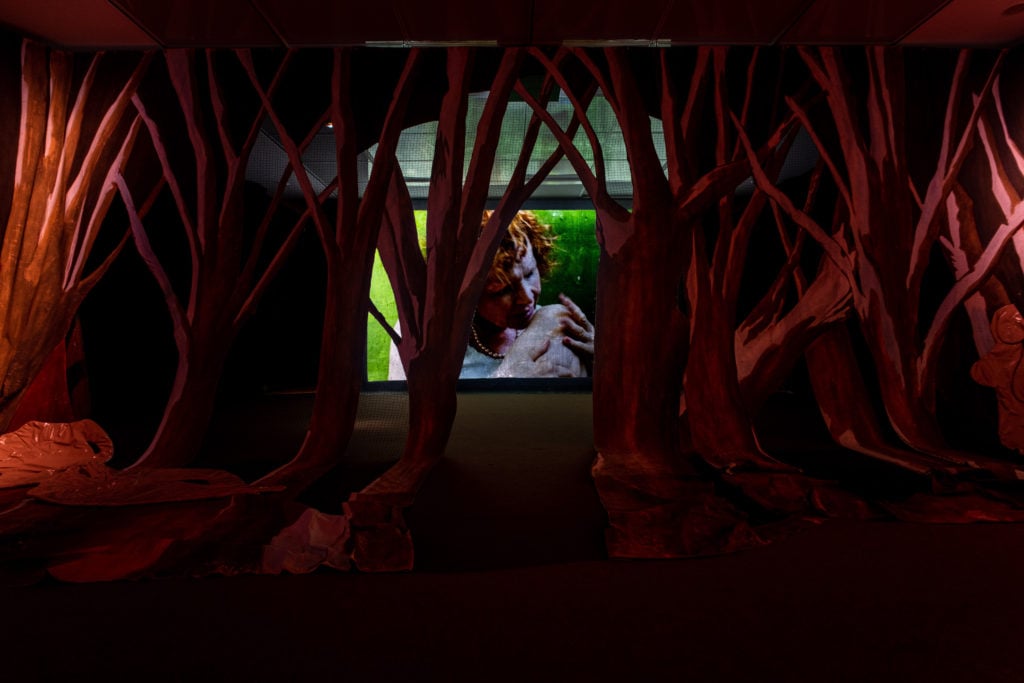
Pauline Curnier Jardin’s installation at the Hamburger Bahnhof. © Mathias Voelzke
All these changes to old habits likely mean reassessing ambitions, and redefining the immersive experience.
“Right now, we have our priorities backwards,” says the artist Tomás Saraceno. “Capital flows freely, jettisoned by the fossil-fuel economy, while people, empathy, and cooperation get stopped at the border. But things like viruses or pollution don’t stop at borders. They don’t need visas, they evade biometric control.”
“Just by closing your eyes you are immersed in other dimensions,” he says.
Colstrup, the Louisiana Museum curator, adds that artists and museums are adaptable (and anyway, most public institutions are basically “low-touch” zones).
“Museums are very good at adapting,” she says. “Artists are very talented creatives who are good at working with the unexpected.”